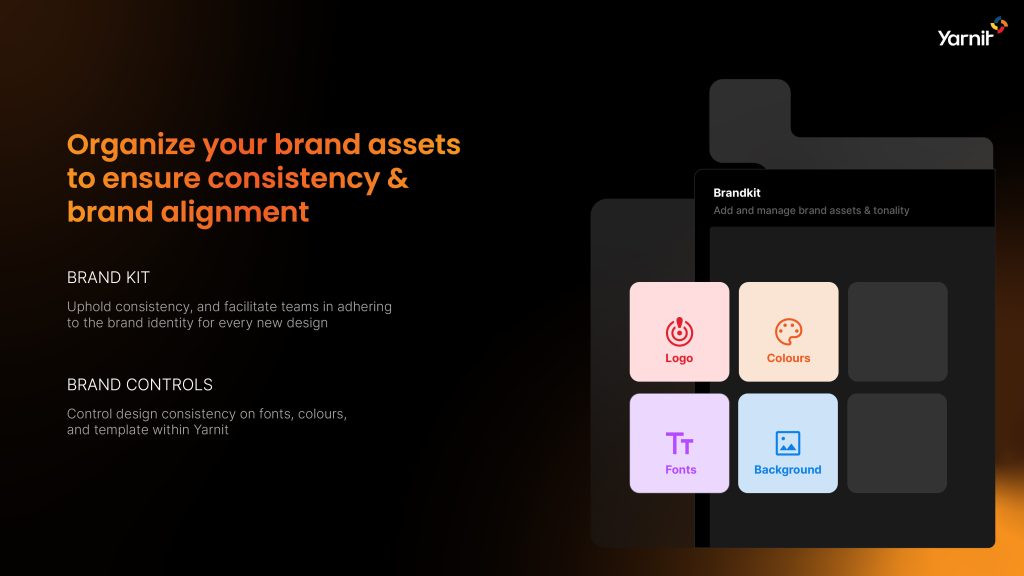
Hotel Visual Branding
Building Emotional Connection
Did you know? Research consistently demonstrates that booking decisions are heavily influenced by emotional reactions to visual storytelling rather than purely rational considerations.
Full-on and Scaleable Customer Support
Why Freshdesk Works?
Freshworks is a suite of business automation software, including a CRM (Customer Relationship Management) solution called Freshsales, which helps businesses manage customer relationships, sales processes, and marketing efforts. Learn more

Visual Branding: A Strategic Approach to Creating Emotional Connections.
While the hospitality landscape becomes more and more competitive, visual content has emerged as a powerful tool for hotels seeking to forge meaningful connections with potential guests.
Research consistently demonstrates that booking decisions are heavily influenced by emotional reactions to visual storytelling rather than purely rational considerations.
Today’s travelers don’t simply book accommodations; they invest in experiences, making visual content that evokes emotion crucial for converting interest into reservations.
This comprehensive analysis explores how hotels can strategically employ visual content to create emotional resonance, build trust, and ultimately drive booking decisions.
The Psychology of Visual Storytelling in Hospitality
Triggering Emotional Responses Through Compelling Imagery
Visual content in hospitality marketing transcends mere documentation of property features, instead creating emotional pathways that connect viewers with experiences. Human decision-making, particularly for travel accommodations, is fundamentally driven by emotional responses rather than purely logical considerations.
By showcasing authentic moments of happiness, relaxation, adventure, and connection, hotels trigger positive emotional reactions in viewers, making them more likely to envision themselves experiencing the property firsthand[1]. This visualization process is psychologically powerful, as potential guests mentally project themselves into the spaces and moments depicted.
The effectiveness of this approach is well-documented in the hospitality industry, where seasoned marketers recognize that emotional rapport often determines booking decisions despite rational considerations of location, amenities, and price. As noted by marketing experts, consumers frequently prioritize “one good, soul-satisfying emotion” over numerous facts when making decisions[8]. This psychological reality underscores why emotionally resonant visual content has become essential rather than optional for properties seeking to influence traveler choices in positive ways.
Creating Multisensory Experiences Through Visual Elements
Compelling visual storytelling extends beyond static imagery to create multisensory experiences that immerse potential guests in the hotel environment. Effective hotel videos combine captivating visuals with evocative audio elements, creating a narrative journey that resonates with viewers’ aspirations and desires[1]. The sound of waves breaking on a beach, ambient music in a spa setting, or the gentle buzz of conversation in a hotel restaurant—these auditory components complement visual elements to create a more comprehensive sensory impression.
This multisensory approach addresses one of the fundamental challenges in hospitality marketing: conveying the intangible atmosphere and ambiance of a property. While written descriptions struggle to communicate these qualities, thoughtfully crafted visual content transports viewers into the hotel experience, allowing them to feel the emotional qualities of spaces before physically visiting[1]. This virtual experience significantly reduces perceived risk in the booking decision while creating anticipation for the actual stay, effectively bridging the gap between consideration and reservation.
Crafting Authentic Visual Narratives That Resonate
Balancing Aspiration With Authenticity
Creating emotional connections through visual content requires a delicate balance between aspirational quality and authentic representation. Contemporary travelers value transparency and authenticity, making overly staged or unrealistic imagery potentially counterproductive. Effective visual content showcases a property’s genuine highlights while maintaining representational accuracy, building trust with potential guests who appreciate honest portrayals[6]. This authenticity extends to the types of experiences depicted, with successful content featuring relatable scenarios that viewers can realistically envision themselves enjoying.
Hotels can achieve this balance by combining professionally produced content with carefully curated user-generated imagery, offering both polished presentations and authentic guest perspectives. This combination proves particularly powerful for establishing credibility, as potential guests often trust the visual testimonials of previous visitors as genuine social proof[5]. Properties that successfully navigate this balance between professional quality and authentic representation build stronger emotional connections while minimizing the disappointment that can result from excessively idealized imagery.
Telling Stories Through Thoughtful Visual Sequences
Effective visual storytelling transcends individual beautiful images to create cohesive narratives that communicate a hotel’s unique character and guest journey. Rather than presenting disconnected property features, successful visual content follows narrative arcs that guide viewers through experiences, from arrival moments to signature activities and memorable interactions[7]. These visual stories communicate not just what a property offers, but how it makes guests feel—a distinction that creates significantly stronger emotional engagement.
This storytelling approach transforms marketing from transactional to experiential, helping properties differentiate themselves in crowded markets where similar amenities might otherwise create commoditization. By creating visual narratives that highlight distinctive experiences, hotels can communicate their unique value propositions through emotional resonance rather than feature lists[5]. This emotional differentiation proves particularly valuable in segments where multiple properties offer similar price points or service levels, allowing hotels to compete on experience rather than specifications.
Technical Excellence in Visual Content Production
Investing in Professional Visual Quality
The technical quality of visual content significantly impacts its emotional effectiveness, making professional production an essential investment rather than a luxury. Hotels seeking to create emotional connections through visual content must prioritize exceptional photography that showcases spaces, features, and experiences with technical precision[8]. Professional photographers bring technical skills that amateur approaches cannot match, including sophisticated composition techniques, lighting expertise, and post-production capabilities that collectively elevate visual impact.
Professional videography similarly transforms ordinary hotel documentation into compelling narratives that evoke emotional responses. Techniques like drone footage provide cinematic perspectives that showcase properties within their broader environments, while steady camera movements and thoughtful editing create immersive experiences that static imagery cannot achieve[7]. These professional touches significantly enhance perceived value while creating the polish and credibility essential for luxury and premium positioning.
Composition Techniques That Evoke Emotional Responses
Beyond basic technical quality, specific compositional approaches significantly enhance the emotional impact of hotel visual content. Successful hotel photography employs techniques like shooting from lower angles to create more dynamic room perspectives, using natural daylight supplemented by strategic artificial lighting, and carefully staging spaces to appear lived-in rather than sterile[3]. These technical considerations collectively determine whether imagery merely documents a property or genuinely captivates viewers emotionally.
Composition fundamentals like the rule of thirds, leading lines, and thoughtful framing guide viewers’ attention and create visual interest that sustains engagement. Color psychology plays a similarly crucial role, with warm tones evoking coziness and comfort while cooler palettes might communicate refreshing tranquility or modern sophistication[3]. These technical elements work together to create visual content that not only presents information but triggers specific emotional responses aligned with a property’s brand positioning and target audience preferences.
Platform-Specific Visual Strategies for Maximum Impact
Optimizing Visual Content for Key Distribution Channels
Creating emotional connections through visual content requires not just compelling production but strategic distribution across platforms where potential guests conduct travel research. Different platforms demand tailored approaches that respect their specific formats, audience expectations, and engagement patterns. Instagram, with its emphasis on visual storytelling, has emerged as a leading platform for hotel marketing, offering opportunities to showcase experiences through both permanent grid content and more ephemeral Stories formats[2]. The platform’s inherently visual nature aligns perfectly with hospitality marketing needs, making it a priority channel for emotional engagement.
While maintaining consistent brand identity across platforms remains essential, successful hotels adapt their visual approaches to each channel’s specific requirements. TikTok, for example, offers opportunities for more spontaneous, authentic content that resonates particularly with younger audiences seeking genuine rather than overly produced experiences[2]. LinkedIn provides a platform for industry leadership and networking beyond direct consumer engagement. By strategically adapting visual content for each platform while maintaining thematic consistency, hotels create cumulative impact as potential guests encounter their imagery across multiple touchpoints during the research process.
Measuring Visual Content Performance and Emotional Impact
The effectiveness of visual content in creating emotional connections can and should be measured through specific engagement metrics that indicate resonance with potential guests. Hotels can track which visual assets generate the highest engagement on social platforms, the longest viewing times on websites, and ultimately the strongest conversion rates to booking inquiries[4]. This performance data enables continuous refinement of visual content strategies, informing decisions about which property features to highlight, which photographic styles generate the strongest responses, and how to sequence visual content most effectively in the customer journey.
This data-driven approach transforms visual content from an artistic endeavor into a strategic business process with measurable outcomes. As artificial intelligence capabilities advance, predictive analytics increasingly guide visual content production, identifying specific imagery types most likely to resonate with target audiences before significant investments are made[4]. This strategic approach ensures that visual content not only looks beautiful but delivers measurable business results through emotional connections that drive booking decisions.
Building Trust Through Visual Transparency
Reducing Uncertainty Through Comprehensive Visual Representation
Trust represents a fundamental requirement for hospitality booking decisions, with potential guests seeking reassurance about what they’ll experience upon arrival. Comprehensive visual content significantly reduces uncertainty by providing transparent representations of accommodations, amenities, and surroundings. When travelers can clearly see what to expect during their stay, they experience reduced anxiety about their booking decisions, increasing confidence in their choices[6]. This transparency proves particularly valuable for first-time guests who lack personal experience with a property and rely heavily on visual information to assess its suitability.
Hotels can build this trust through visual content that provides thorough property coverage, including realistic room representations, accurate amenity depictions, and honest portrayals of surroundings. Virtual tours and 360-degree room views particularly enhance trust by allowing potential guests to independently explore spaces rather than seeing only carefully selected angles[4]. This comprehensive visual transparency creates confidence that minimizes booking hesitation while setting reasonable expectations that the property can consistently meet or exceed.
Leveraging User-Generated Content as Visual Social Proof
User-generated visual content provides powerful social validation that significantly enhances emotional connections with potential guests. When travelers see authentic images and videos created by previous guests enjoying a property, they receive compelling evidence that marketing promises align with actual experiences[5]. This visual social proof carries exceptional credibility because it comes from peers rather than marketing professionals, offering unfiltered perspectives that validate a hotel’s claims while showcasing how real people experience the property.
Hotels can strategically incorporate user-generated content by encouraging guests to share their experiences through branded hashtags, photo contests, and incentive programs[6]. When thoughtfully curated and integrated into marketing channels, these guest-created visuals build trust while often highlighting unexpected details or perspectives that professional photography might overlook.
The amplification effect of shared user content further extends a property’s reach, as these authentic endorsements influence the extended social networks of previous guests, creating powerful word-of-mouth recommendations in visual form.

Conclusion: Transforming Visual Content into Booking Decisions
Visual content has evolved from a supplementary marketing element to a primary driver of emotional connection and booking decisions in the hospitality industry. As travelers increasingly prioritize experiences over mere accommodations, hotels that effectively harness the emotional power of visual storytelling gain significant competitive advantages.
By creating authentic, technically excellent visual narratives distributed strategically across multiple platforms, properties can forge meaningful connections with potential guests before they ever arrive on site.
The most successful visual content strategies balance aspirational quality with genuine representation, technical excellence with emotional resonance, and professional production with authentic user-generated perspectives. When thoughtfully implemented, these approaches create cumulative emotional impact that influences decision-making throughout the customer journey, from initial inspiration to final booking.
As visual technologies continue evolving through innovations like virtual reality and artificial intelligence personalization, the opportunities for creating even more immersive emotional connections will only expand, offering forward-thinking hotels new ways to differentiate themselves in an increasingly competitive marketplace.

Sources
[1] The Power of Visual Storytelling in Hotel Marketing – Factor Fifty https://factorfifty.film/the-power-of-visual-storytelling-in-hotel-marketing-connecting-emotionally-through-compelling-videos/
[2] The importance of visual content in the hospitality industry https://hotelmanagement.medplaya.com/en/the-importance-of-visual-content-in-the-hospitality-industry/
[3] How to Capture Emotion in Hotel Photography in Every Shot – Furoore https://furoore.com/how-to-capture-emotion-in-hotel-photography/
[4] Social Media Marketing for Hotels: Creating Engaging Visual Content https://www.syte.co.za/hotel-social-media-strategies-engaging-visual-content/
[5] Hospitality Industry Visual Storytelling – Jack Tyler Logos https://jacktylerlogos.com/visual-storytelling-in-the-hospitality-industry/
[6] The Impact of Visual Storytelling on Guest Engagement – MyHotelLine https://www.myhotelline.com/blog/the-impact-of-visual-storytelling-on-guest-engagement
[7] The Power of Visual Storytelling: How Quality Photography and … https://nuvho.com/visual-storytelling-boost-direct-bookings/
[8] Emotion and Hotel Marketing, can you deliver? – Martin Soler https://martinsoler.com/insights/emotion-and-hotel-marketing-can-you-deliver
[9] Images from the Hotel Lagrein, Schenna near Meran in South Tyrol https://www.hotellagrein.com/en/holiday-home/images-emotional-shy-and-in-motion
[10] Visual Storytelling Techniques to Boost Hotel Conversions https://blog.netaffinity.com/use-visual-storytelling-techniques-to-boost-hotel-conversions
[11] Introduction to visual storytelling for the hospitality industry https://www.hospitalitynet.org/opinion/4113551.html
[12] Visual Storytelling Techniques To Boost Hotel Conversions | By … https://www.hospitalitynet.org/opinion/4071830.html
[13] How Emotional Marketing Drives Guest Loyalty for Hotels – PR News https://everything-pr.com/how-emotional-marketing-drives-guest-loyalty-for-hotels/
[14] What is Hotel Branding? Main Elements of Hotel Branding Identity https://www.designingit.com/blog/what-is-hotel-branding/
[15] Hotel Guest Experience Pictures, Images and Stock Photos – iStock https://www.istockphoto.com/photos/hotel-guest-experience
[16] 20 Rich Social Media Content Ideas For Hotels – Digital Travel Expert https://digitaltravelexpert.com/rich-social-media-content-ideas-for-hotels/
[17] 10 Ways Hotel Design Can Forge Emotional Connections and … https://www.hksinc.com/our-news/articles/10-ways-hotel-design-can-forge-emotional-connections-and-engage-the-senses/
[18] Hotel branding | How to build a brand strategy in 2025 – Mews https://www.mews.com/en/blog/hotel-branding
[19] Romantic Hotel Pictures, Images and Stock Photos – iStock https://www.istockphoto.com/photos/romantic-hotel
[20] Visual Content & its relevance in Hotel Marketing Strategies https://marketmyhotel.in/hotel-marketing-strategy-using-visual-content/
[21] The Power Of Storytelling In Hotel Branding – Britts Imperial 2025 https://brittsimperial.com/the-power-of-storytelling-in-hotel-branding/
[22] Hotel branding strategy: Building an authentic identity in hospitality https://hospitalityinsights.ehl.edu/hotel-branding-tips
[23] Hotel Images – Free Download on Freepik https://www.freepik.com/free-photos-vectors/hotel
[24] 5 Ways to Boost Your Hotel’s Visual Content (and your Sales!) https://www.linkedin.com/pulse/5-ways-boost-your-hotels-visual-content-sales-boiangiu
[25] The Power of Visual Storytelling in the Hospitality Industry https://www.houseofmarzphotography.com.au/blog/the-power-of-visual-storytelling-in-the-hospitality-industry
[26] The 4 Best Visual Storytelling Techniques for Hotels | Cvent Blog https://www.cvent.com/en/blog/hospitality/how-to-elevate-your-visual-storytelling-for-hotel-marketing
[27] The Impact of Emotional Design on User Engagement https://hotel-webdesign.com/en/the-impact-of-emotional-design-on-user-engagement/
[28] Video Marketing in Hospitality – C&I Studios https://c-istudios.com/video-marketing-in-hospitality-creating-memorable-guest-experiences/
[29] The Power of Storytelling in Hospitality Marketing – Hotel SØMA https://hotelsoma.com/stories/the-power-of-storytelling-in-hospitality-marketing/
[30] Storytelling for hotels: authentic stories sell – Asksuite https://asksuite.com/blog/how-storytelling-for-hotels-impact-revenue/
[31] The Power of Hotel Social Media Post Design: Eye-catching and … https://www.regent.marketing/the-power-of-hotel-social-media-post-design-eye-catching-and-engaging-content/
[32] The Power of Storytelling in Building Hotel and Restaurant Brands https://www.joriwhitepr.co.uk/articles/the-power-of-storytelling-in-building-hotel-and-restaurant-brands
